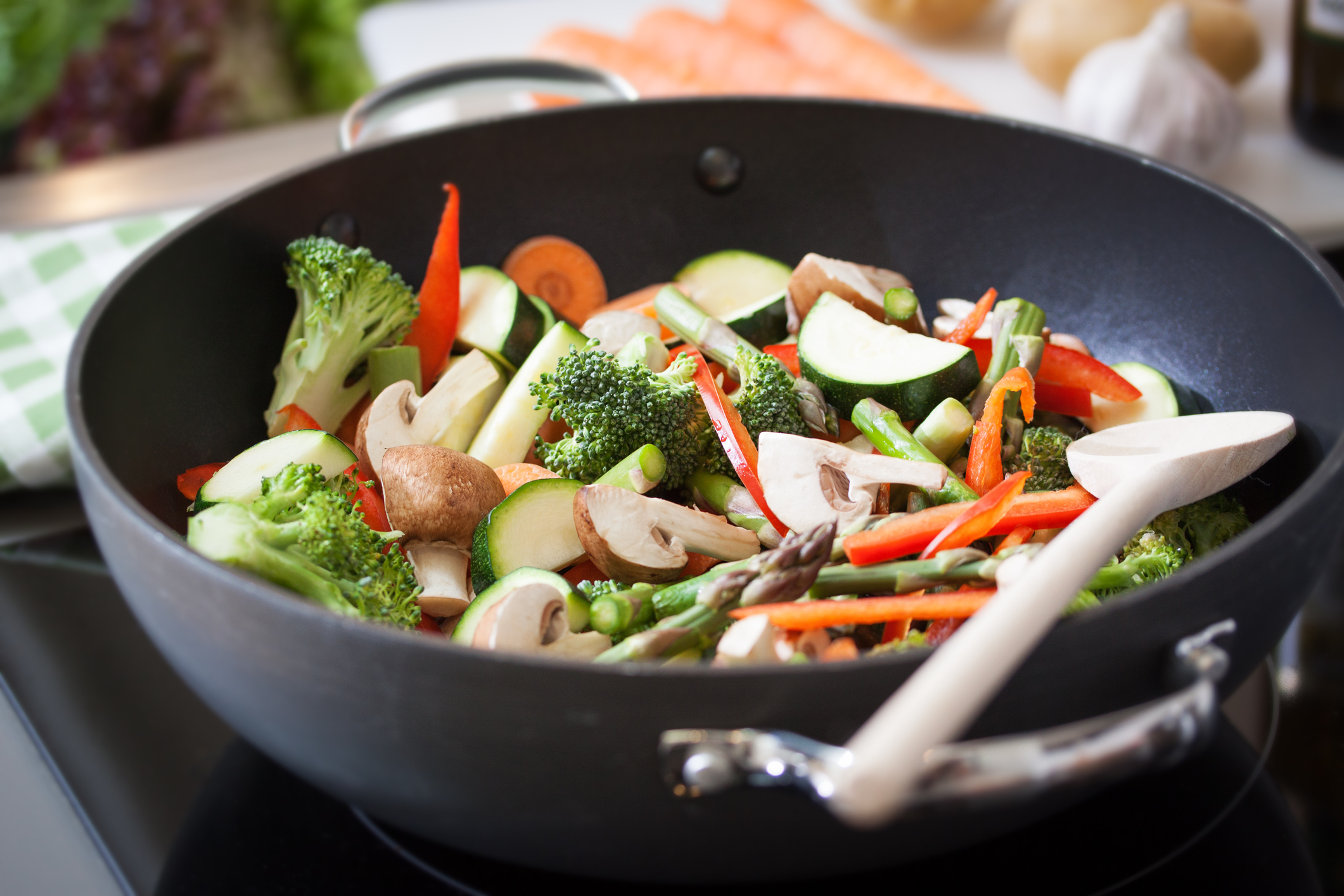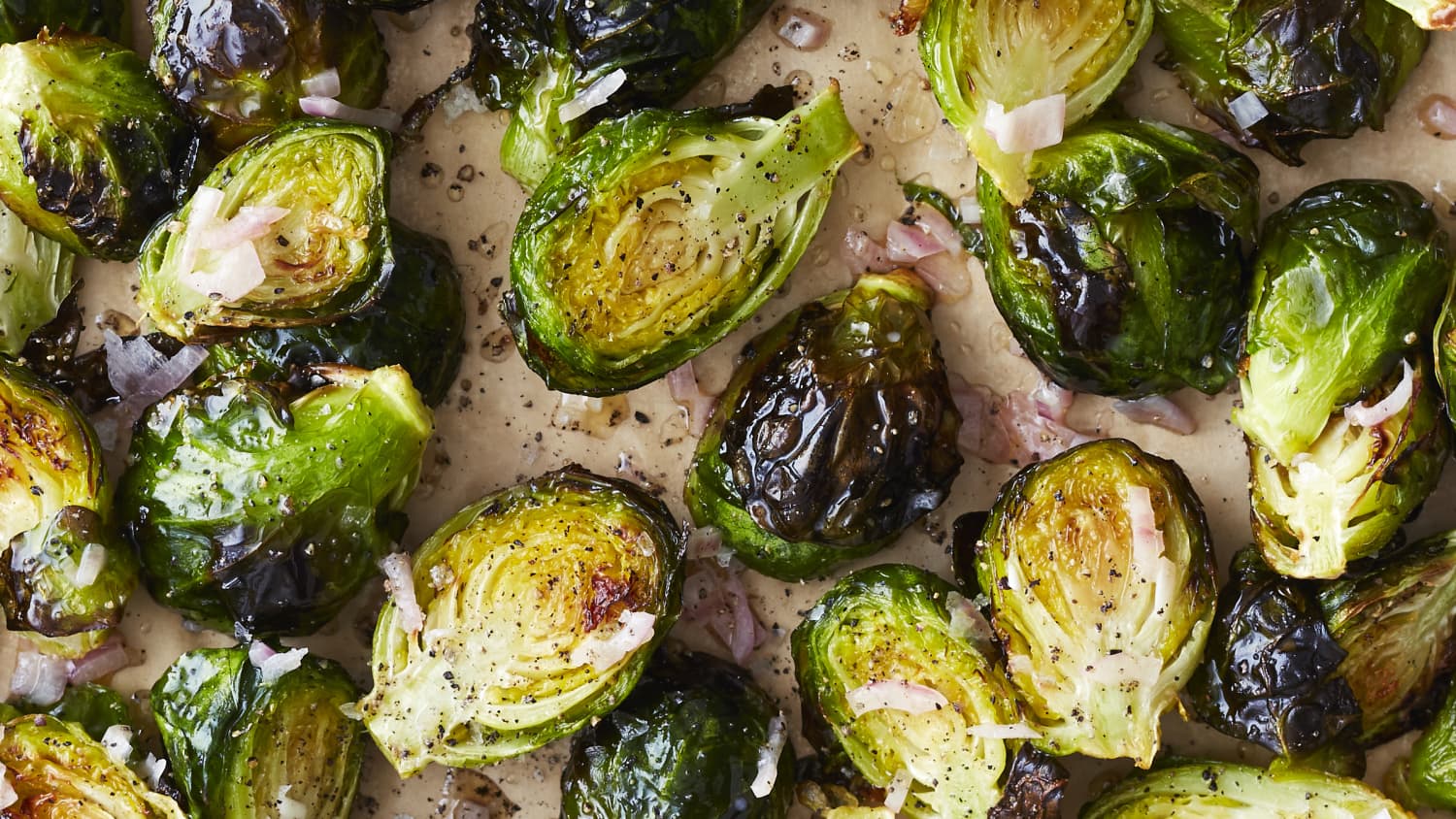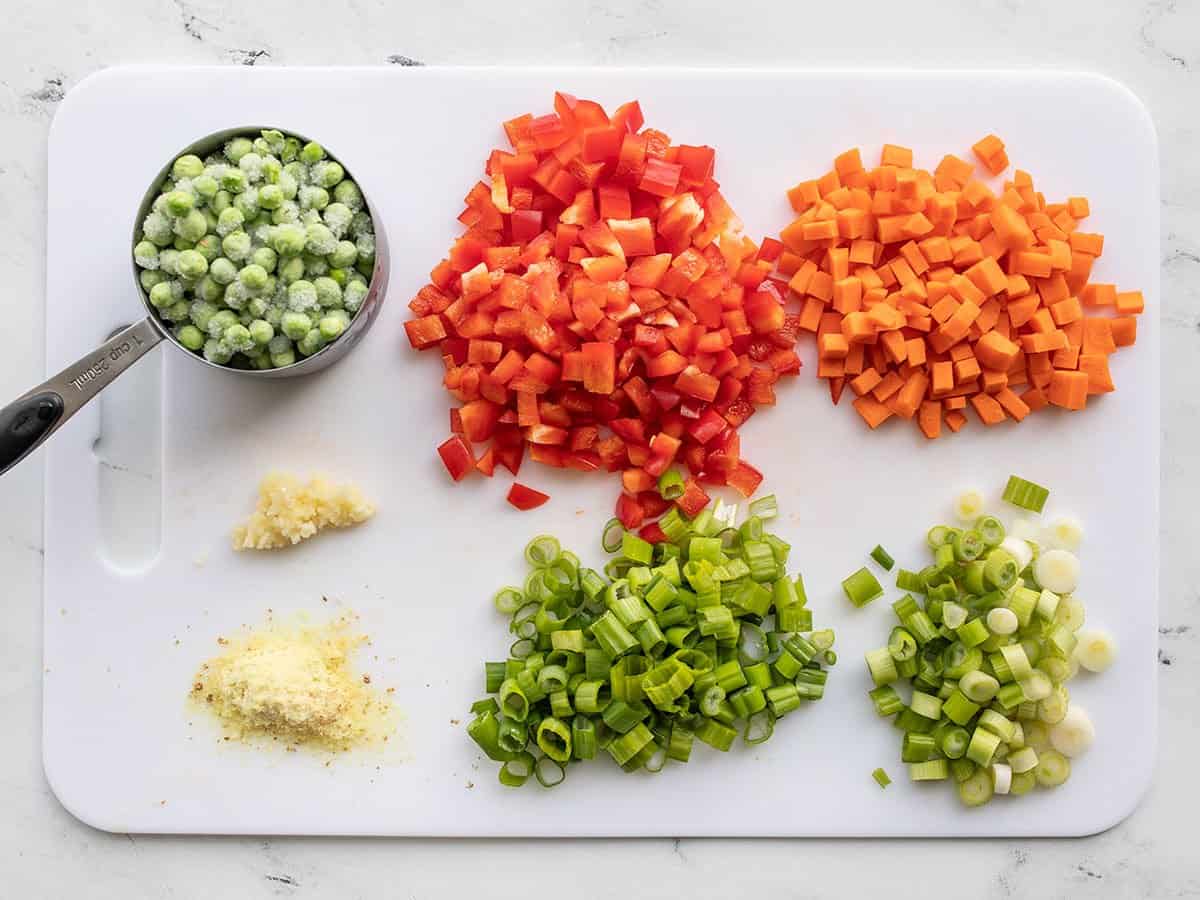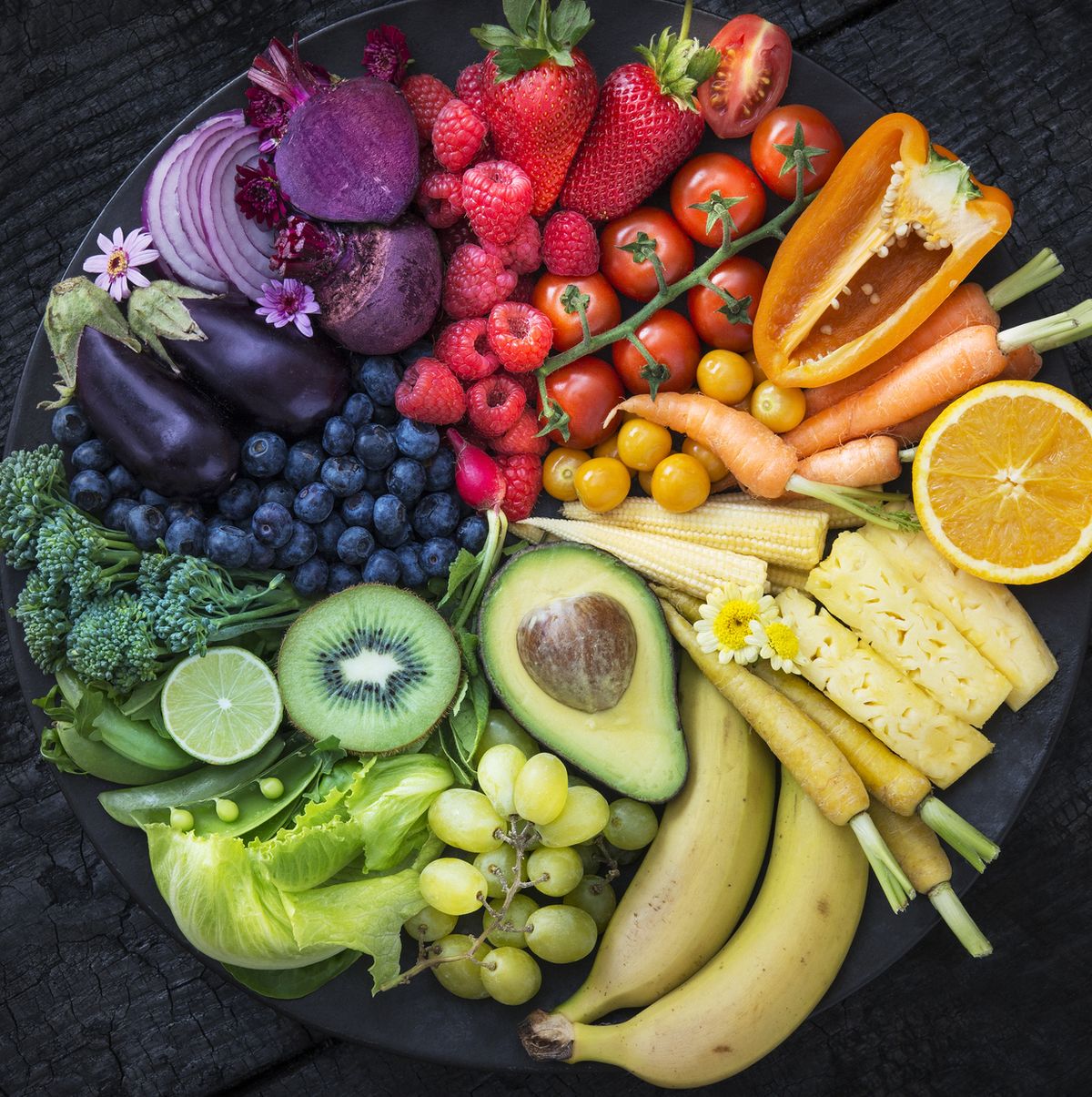Home>Gardening News and Trends>Latest News>How Many Calories In Stir Fry Vegetables


Latest News
How Many Calories In Stir Fry Vegetables
Modified: January 22, 2024
Discover the latest news on how many calories are in stir fry vegetables. Find out all the essential information you need to maintain a healthy diet.
(Many of the links in this article redirect to a specific reviewed product. Your purchase of these products through affiliate links helps to generate commission for Chicagolandgardening.com, at no extra cost. Learn more)
Table of Contents
Introduction
Stir fry is a popular cooking technique that originated in Asian cuisine and has gained worldwide popularity due to its delicious flavors and quick preparation time. This cooking method involves quickly stir frying bite-sized pieces of vegetables, meats, and sauces in a hot pan, resulting in a perfectly cooked and flavorful dish.
Stir fry vegetables, in particular, are a delightful and nutritious option for those seeking a healthy meal. Packed with vitamins, minerals, and antioxidants, stir fry vegetables offer an array of health benefits while tantalizing your taste buds.
In this article, we will explore the nutritional benefits of stir fry vegetables, delve into the calorie content of common vegetables used in stir fry dishes, and discuss factors that can affect the calorie content. Additionally, we will provide tips on how to make healthier stir fry vegetables without compromising on taste or texture.
Whether you are a health-conscious individual looking to maintain a balanced diet or someone who simply enjoys the vibrant flavors of stir fry dishes, this article aims to provide you with valuable information to help you make informed decisions when preparing stir fry vegetables.
What is Stir Fry?
Stir fry is a cooking technique that has been used in Asian cuisine for centuries. It involves quickly frying small, bite-sized pieces of ingredients, such as vegetables, meat, seafood, or tofu, in a hot pan or wok. The process of stir frying involves high heat and constant stirring, resulting in food that is cooked quickly and evenly.
One of the defining characteristics of stir fry is the use of a flavorful sauce or seasoning. This sauce, often made with a combination of soy sauce, garlic, ginger, and other spices, adds depth and complexity to the dish. It’s important to note that stir fry dishes can be customized to suit individual tastes and dietary preferences, making them a versatile choice for any meal.
Stir fry is a versatile cooking method that is not only quick and easy but also allows for a wide variety of ingredients to be used. From vibrant and colorful vegetables like bell peppers, broccoli, and carrots, to protein sources such as chicken, beef, and shrimp, the possibilities are endless when it comes to creating delicious stir fry dishes.
Furthermore, stir fry not only offers a burst of flavor but also retains the nutrients and textures of the ingredients, making it a healthier cooking option compared to other methods. The rapid cooking time ensures that the vegetables remain crisp and retain their bright colors, while the protein sources are cooked to perfection.
Overall, stir fry is a fantastic cooking technique that combines speed, flavor, and nutrition into one delicious dish. Whether you’re a seasoned chef or a novice in the kitchen, stir fry is accessible to all, allowing you to experiment with flavors and create meals that are sure to impress your family and friends.
Nutritional Benefits of Stir Fry Vegetables
Stir fry vegetables offer a plethora of nutritional benefits, making them an excellent addition to a well-balanced diet. Here are some of the key benefits:
- Rich in Vitamins and Minerals: Stir fry vegetables are packed with essential vitamins and minerals that are vital for maintaining optimal health. They are particularly abundant in vitamins A, C, and K, as well as minerals such as potassium and folate. These nutrients play a crucial role in supporting a healthy immune system, promoting good vision, and aiding in proper cell function.
- High in Fiber: Stir fry vegetables, such as broccoli, bell peppers, and snow peas, are excellent sources of dietary fiber. Fiber is known for its role in promoting healthy digestion, preventing constipation, and supporting weight management. Including stir fry vegetables in your diet can help you achieve your daily fiber requirements and keep your digestive system running smoothly.
- Packed with Antioxidants: Stir fry vegetables are brimming with antioxidants that help protect the body against oxidative stress and damage caused by free radicals. These antioxidants, including flavonoids, carotenoids, and vitamin C, can help reduce the risk of chronic diseases, such as heart disease and certain types of cancer.
- Low in Calories and Fat: One of the biggest advantages of stir fry vegetables is their low calorie and fat content. They make for a filling and nutritious meal without adding excessive calories. By using minimal oil and opting for lean protein sources, stir fry vegetables can be a great option for weight management and overall health.
- Versatile and Customizable: With a wide variety of vegetables to choose from, stir fry dishes offer endless possibilities for creating a nutritious and flavorful meal. You can mix and match vegetables to suit your preferences and dietary needs, ensuring that you’re getting a well-rounded meal packed with essential nutrients.
By incorporating stir fry vegetables into your meal plan, you can enjoy the numerous health benefits they offer while indulging in a delicious and satisfying dish.
Calorie Content of Common Stir Fry Vegetables
When it comes to counting calories and managing your dietary intake, it’s essential to have an understanding of the calorie content of common stir fry vegetables. Here are some estimates of the calorie content per 100 grams (3.5 ounces) for a few commonly used stir fry vegetables:
- Broccoli: Approximately 34 calories
- Carrots: Approximately 41 calories
- Bell peppers: Approximately 31 calories
- Mushrooms: Approximately 22 calories
- Spinach: Approximately 23 calories
- Snow peas: Approximately 42 calories
- Cabbage: Approximately 25 calories
- Zucchini: Approximately 17 calories
It’s important to note that these calorie estimates are approximate and can vary slightly based on factors such as cooking method and preparation. Additionally, if you add oil, sauce, or other ingredients to your stir fry, the calorie content will increase accordingly.
While these vegetables are relatively low in calories, keep in mind that the total calorie count of your stir fry dish will depend on the ingredients you use and the portion size. If you’re aiming to reduce your calorie intake, opt for smaller portions of higher-calorie vegetables, use cooking techniques that require less oil, and choose lean protein sources.
By being mindful of the calorie content of the vegetables you include in your stir fry, you can create a balanced meal that aligns with your dietary goals and supports a healthy lifestyle.
Factors That Affect Calorie Content in Stir Fry Vegetables
While stir fry vegetables are generally low in calories, it’s important to note that various factors can affect their overall calorie content. Here are some factors that can impact the calorie content of your stir fry vegetables:
- Cooking Method: The cooking method you choose can significantly impact the calorie content of your stir fry vegetables. Stir frying typically requires the use of oil or cooking spray to prevent sticking and enhance flavor. The amount of oil used can vary, and using excessive oil can significantly increase the calorie count. Overcooking the vegetables can also lead to nutrient loss.
- Portion Size: The portion size of your stir fry vegetables will directly affect the overall calorie intake. While vegetables are generally low in calories, eating large portions can still contribute to calorie consumption. Be mindful of the portion sizes and balance them with other components of your meal.
- Additional Ingredients: The addition of other ingredients, such as sauces, condiments, and protein sources, can significantly impact the calorie content of your stir fry. Some sauces and condiments may contain hidden sugars or high amounts of sodium, increasing the overall calorie count. Choosing lean protein sources and opting for lighter sauces or making your own homemade sauce can help control the calorie content.
- Vegetable Maturity: The maturity and size of the vegetables used can affect the calorie content. For example, younger and smaller vegetables tend to have a higher water content and fewer calories compared to their more mature counterparts. Consider the size and maturity of the vegetables when planning your stir fry to manage the overall calorie intake.
- Preparation Methods: The way you prepare the vegetables before stir frying can affect their calorie content. For example, peeling certain vegetables like potatoes or removing the skin from chicken can reduce the overall calorie count. However, it is important to note that some nutrients may also be lost during the preparation process.
By considering these factors and making conscious choices, you can modify the calorie content of your stir fry vegetables to better align with your dietary goals and preferences.
Tips for Making Healthier Stir Fry Vegetables
Stir fry vegetables can be a nutritious and flavorful addition to your diet. Here are some tips to make your stir fry vegetables even healthier:
- Use a Non-Stick Pan: Using a non-stick pan can help minimize the amount of oil needed for cooking. This reduces the overall calorie content of your stir fry while still providing a delicious and satisfying meal.
- Choose Healthy Cooking Oil: Opt for healthier cooking oils such as olive oil, avocado oil, or coconut oil in small quantities. These oils are rich in monounsaturated fats and have various health benefits.
- Incorporate a Variety of Vegetables: Mix and match a variety of colorful vegetables to maximize the nutritional benefits. This ensures that you get a wide array of vitamins, minerals, and antioxidants in your stir fry dish.
- Steam or Blanch Vegetables: To preserve the nutrients and reduce the calorie content, consider steaming or blanching the vegetables before stir frying. This helps retain the vibrant colors and crunchy texture of the vegetables while minimizing nutrient loss.
- Opt for Lean Protein: Choose lean sources of protein, such as skinless chicken breast, tofu, or shrimp, to keep the calorie content in check. These protein sources are lower in saturated fats and can contribute to a healthier meal.
- Make Your Own Sauce: Store-bought sauces may contain added sugars and higher sodium levels. Prepare your own homemade sauce using healthier alternatives like low-sodium soy sauce, ginger, garlic, and lime juice.
- Control Portion Sizes: While stir fry vegetables are healthy, portion sizes still matter. Be mindful of your portion sizes and balance them with other components of your meal to maintain a calorie-controlled diet.
- Add Flavor with Spices and Herbs: Rather than relying solely on high-calorie sauces, experiment with various spices and herbs to add flavor to your stir fry. This not only enhances the taste but also adds additional health benefits.
- Serve with Whole Grains: Pair your stir fry vegetables with whole grains like brown rice, quinoa, or whole wheat noodles. This provides fiber, complex carbohydrates, and additional nutrients to create a well-rounded and satisfying meal.
- Experiment with Different Cooking Techniques: Stir frying is just one way to prepare vegetables. Consider other cooking techniques like grilling, roasting, or baking to add variety to your meals and bring out different flavors.
By implementing these tips, you can transform your stir fry vegetables into a healthier and more nutritious dish without sacrificing taste or enjoyment.
Conclusion
Stir fry vegetables offer a delicious and nutritious way to incorporate more plant-based goodness into your diet. Packed with vitamins, minerals, and antioxidants, stir fry vegetables can contribute to a well-rounded and health-conscious meal. Their low calorie content and high fiber content make them a great choice for weight management and overall health.
By understanding the calorie content of common stir fry vegetables and considering factors that influence their calorie count, you can make informed decisions when preparing your dishes. Mindful choices such as using healthier cooking oils, controlling portion sizes, and incorporating a variety of vegetables can help you create a wholesome stir fry experience.
Making healthier stir fry vegetables is not just about reducing calories; it also involves maximizing flavor and nutritional value. Using spices and herbs, experimenting with different cooking techniques, and pair them with whole grains and lean sources of protein can add depth and variety to your stir fry dishes.
Remember, healthy eating is about balance and mindful choices. While stir fry vegetables can be a nutritious and delicious addition to your diet, it’s essential to consider the overall composition of your meals and ensure a well-rounded intake of nutrients from other food groups.
So next time you’re looking for a quick and satisfying meal, consider stir fry vegetables. Embrace your creativity, enjoy the vibrant flavors, and nourish your body with the countless benefits that stir fry vegetables offer.









